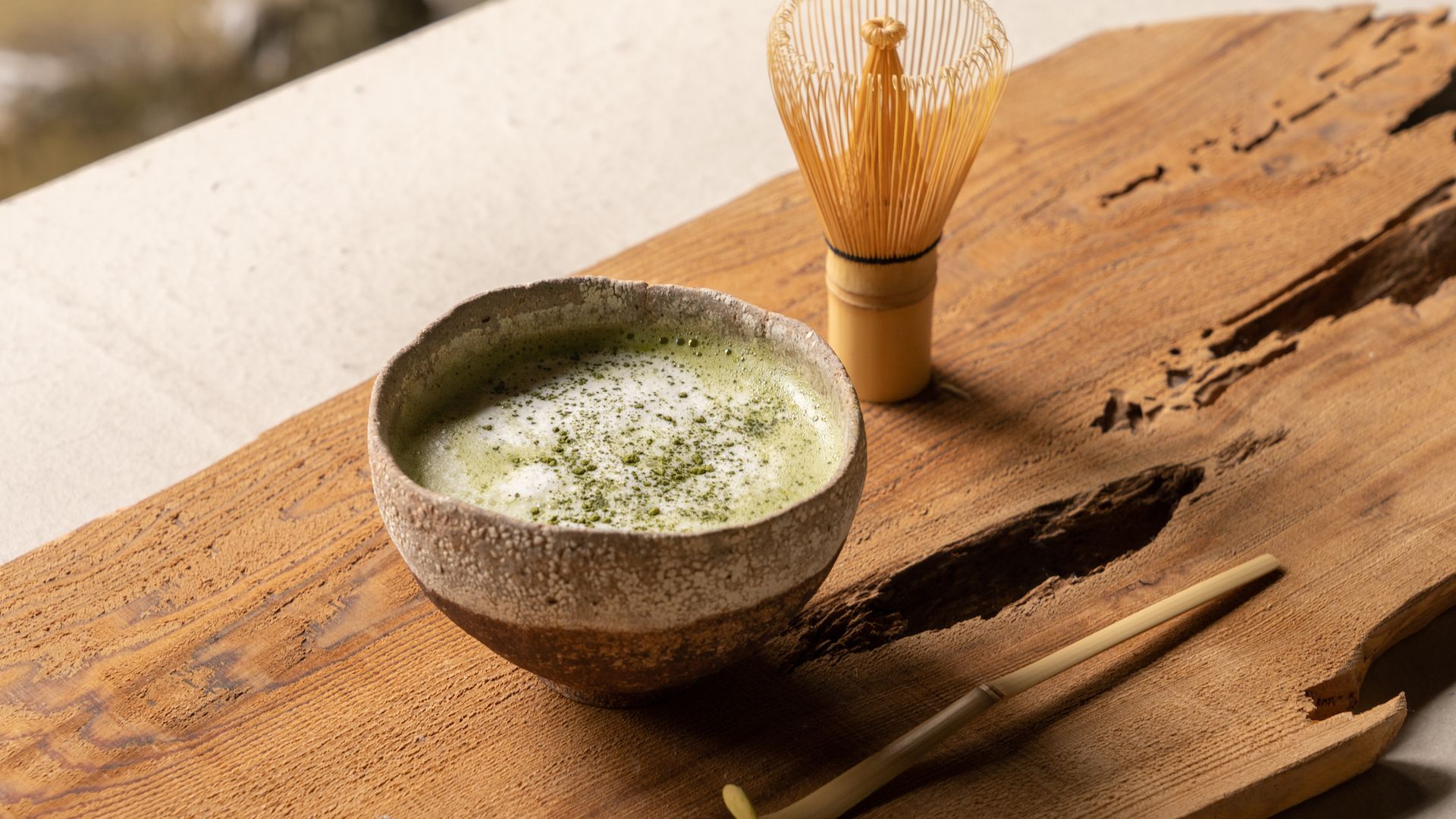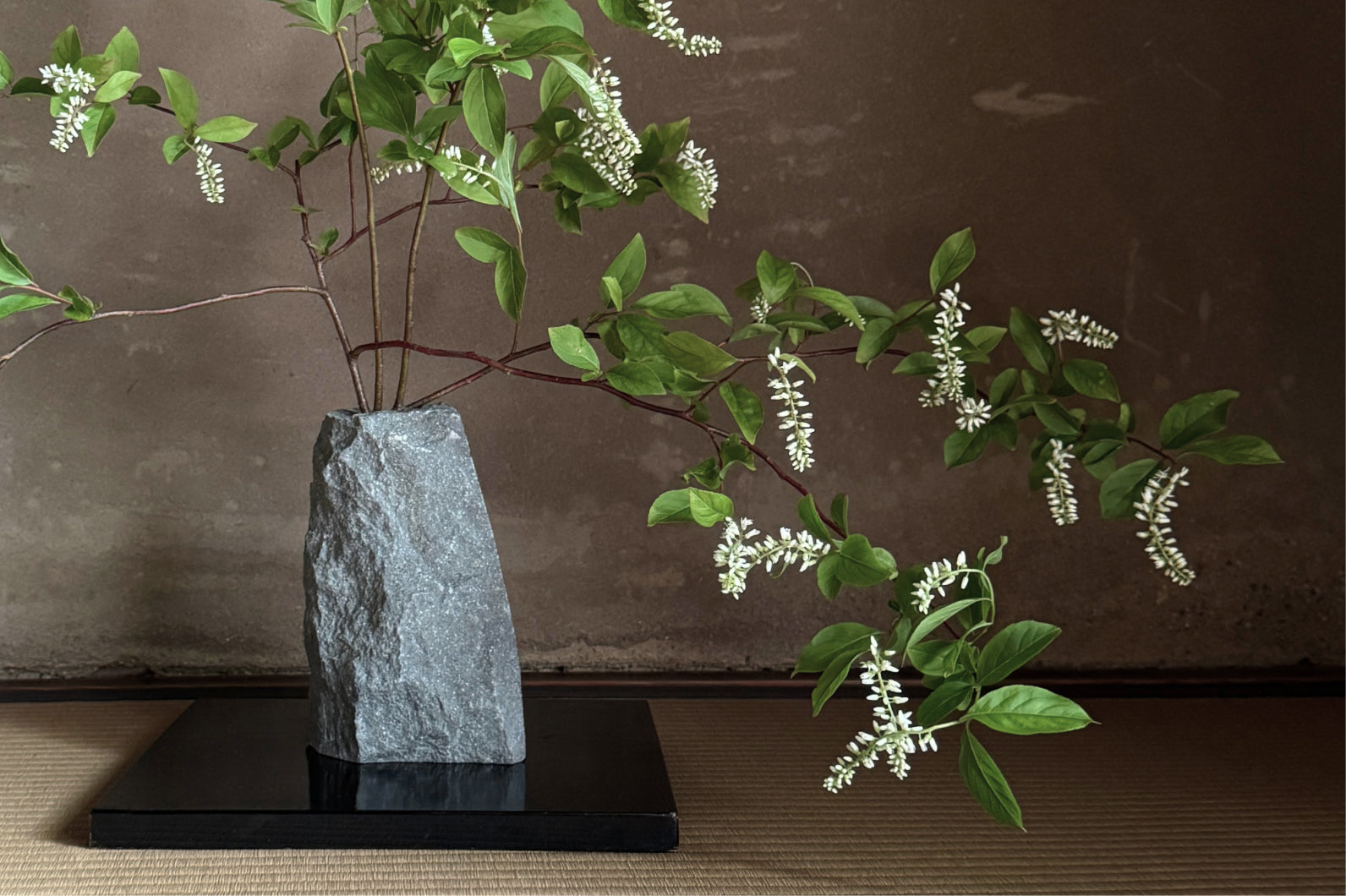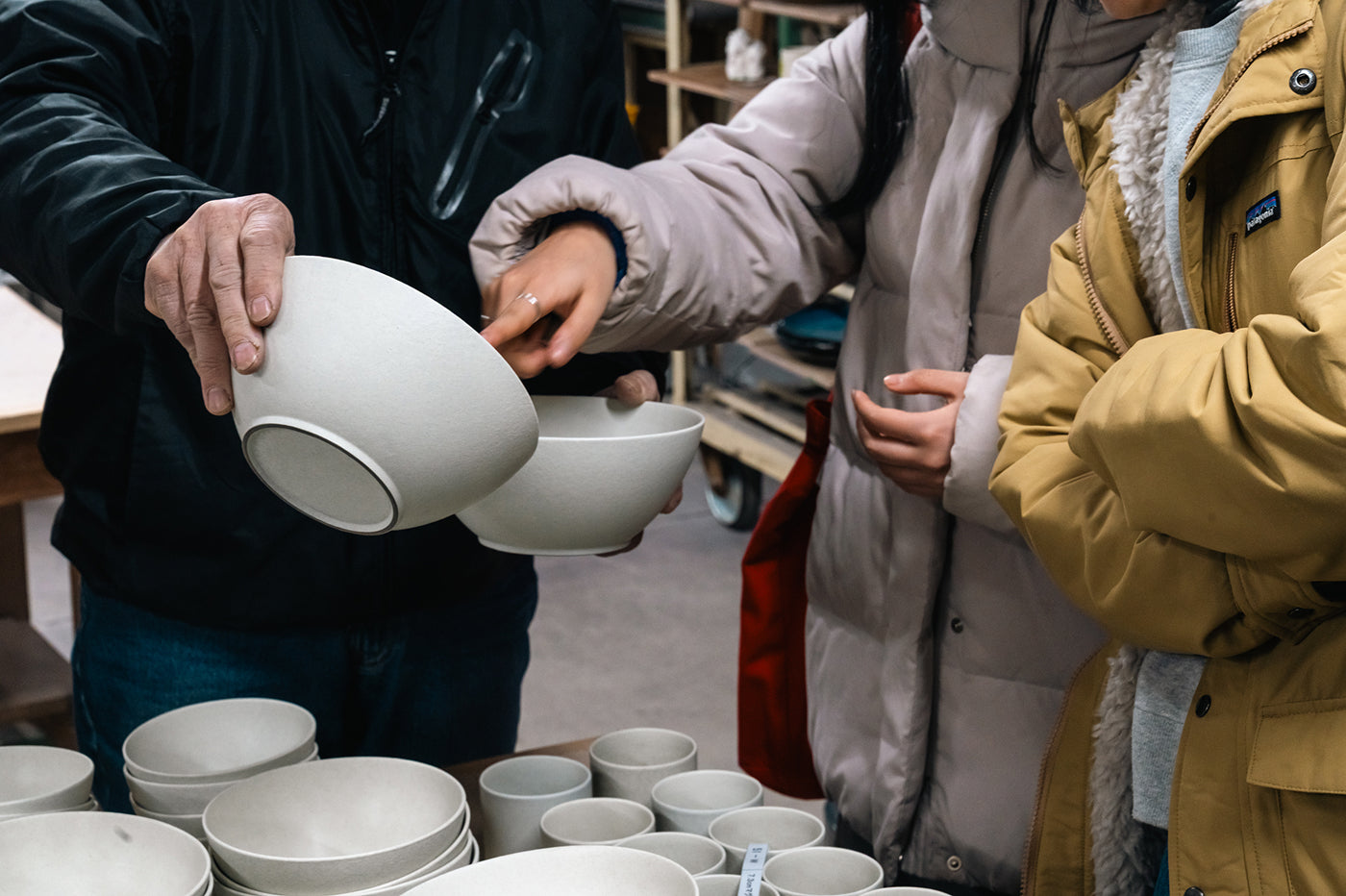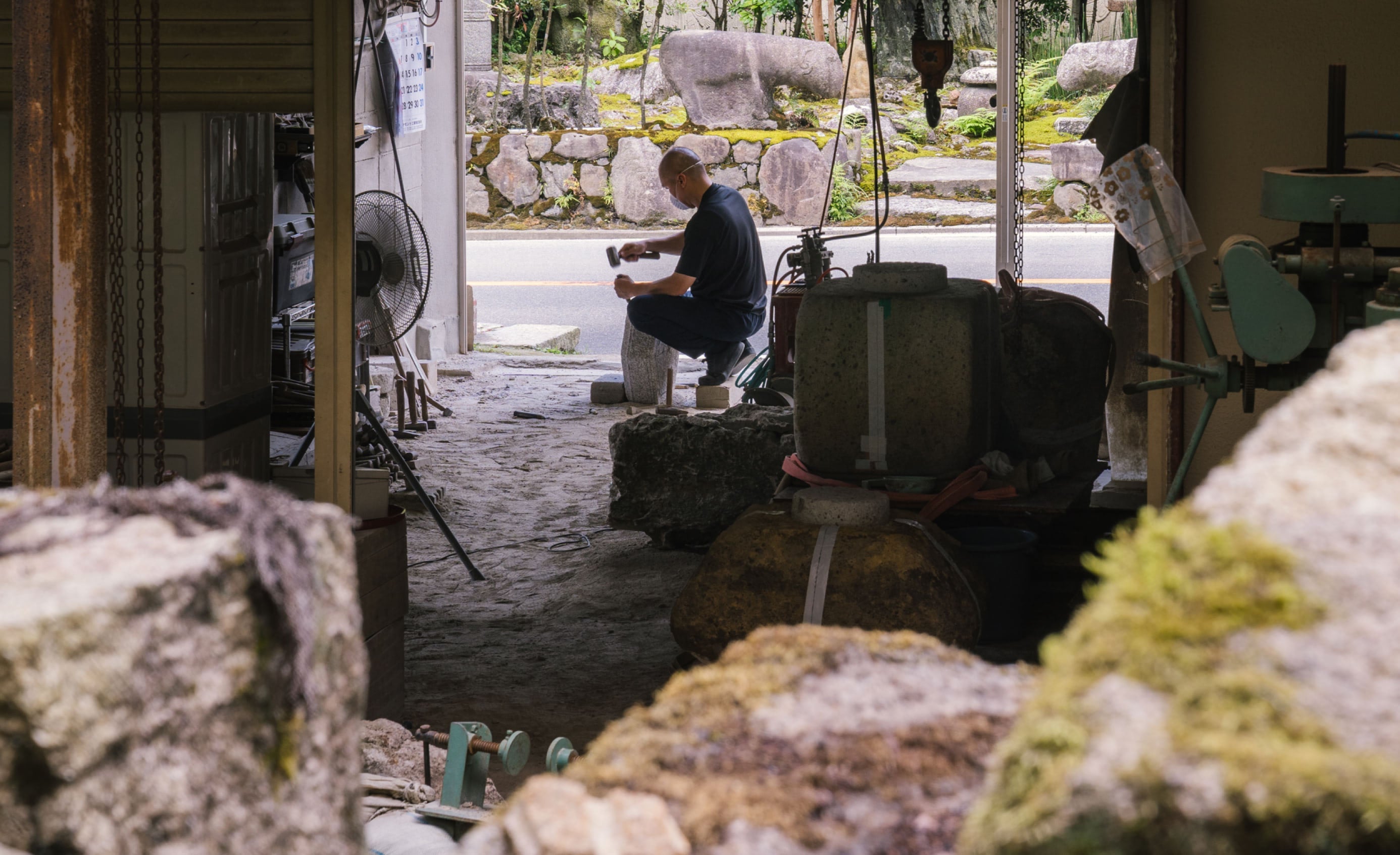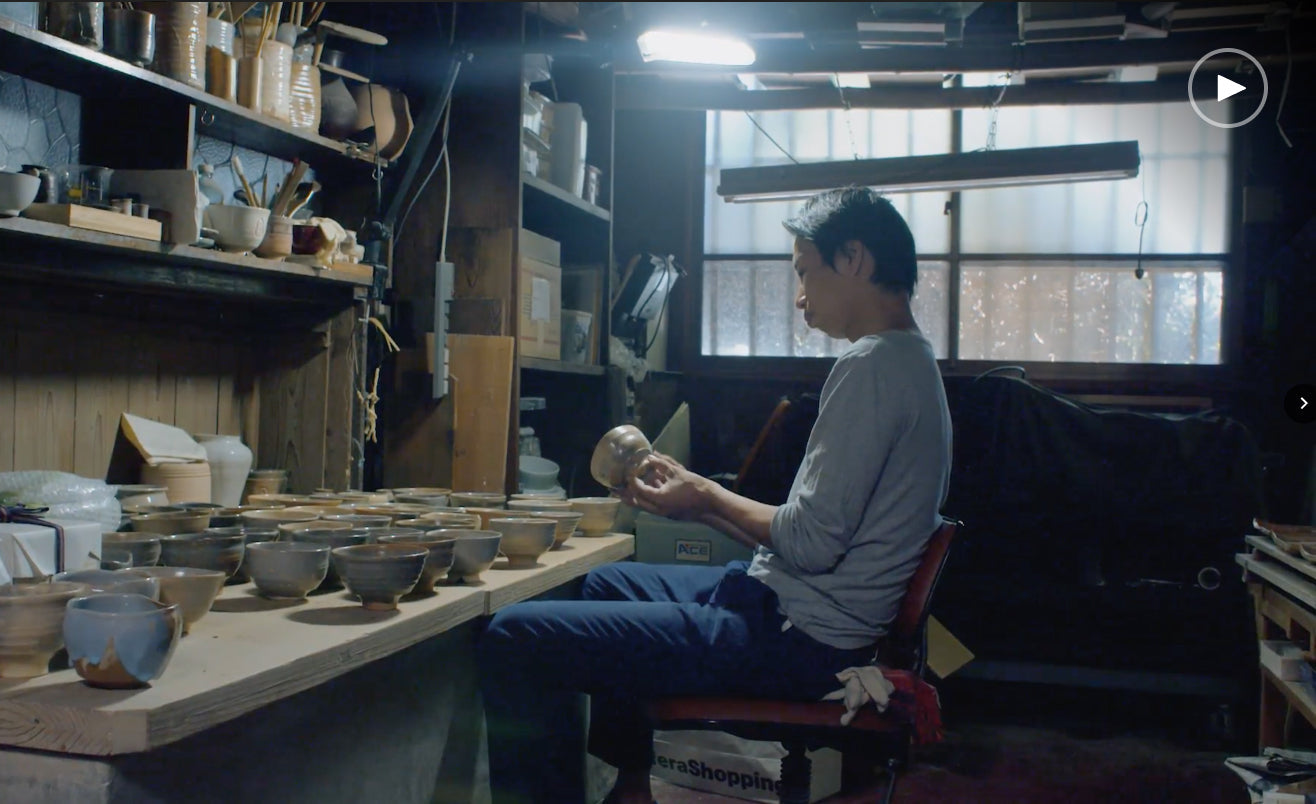Japan’s nutrient-rich, volcanic soil, combined with centuries of cultural influences, have given rise to a wide spectrum of ceramics. Here are a few prominent representations of Japanese ceramics from across the country.
KYOTO TRADITIONS
Raku
Raku originated in Kyoto during the 16th century. It is reflective of the wabi-sabi aesthetic with its hand-molded shapes and organic appearance. Developed by Tanaka Chojiro for tea master Sen no Rikyu, Raku emphasizes humility and simplicity, holding a distinct place in Japanese tea culture. Raku traditionally appears in red and black hues. As tea rooms have roots as deep-mountain respites, little light entered the small huts. The bright green tea is highlighted against the deep color of the vessel that creates the experience of peering into the universe in the palm of your hands. Red symbolizes sunlight and black, moonlight. Traditionally made with Kyoto's red clay at a fire stoked at dawn, Raku undergoes low-temperature, rapid firing, resulting in unique glaze patterns and a soft texture. This intentional softness allows the drinker to experience the tea, rather than the cup, during tea ceremonies.
Kiyomizu
Those familiar with Kyoto know of the famous Kiyomizu Temple. Kiyomizu refers to a broad category of ceramics from the Kiyomizu pottery district, known for its high quality and diverse range of vessels, including teaware and decorative pieces.
NIHON ROKKOYO
JAPAN’S SIX ANCIENT KILNS
Other examples of Japanese pottery include the Six Ancient Kilns, which collectively showcase historic ceramic productionregions dating back 1,000 years. In 2017, the Nihon Rokkoyo were certified as Japan Heritage Sites, officiating their already well-respected histories.
Echizen, Fukui:
Primarily focused on producing quality, everyday vessels like pots and jars, Echizen has a distinctive warm and natural appearance thanks to its use of local clay with high iron content. The high-temperature firing process, which omits enamel, results in a natural glaze formed by firewood ash, and places Echizen in the category between earthenware and stoneware.

Bizen, Okayama:
Made using clay mixed from rice paddies and mountains, Bizen is placed into the kiln unglazed. The large kilns use natural ash to fire the wares, resulting in earthy and rustic finishes that accentuate the natural qualities of the clay. Bizen is celebrated for its simple beauty, durability, and the distinct markings left by the wood-fired process. It is said that the color and texture of Bizen grow more beautiful with use, so actively incorporating these pieces can contribute to their evolving beauty.
Seto, Aichi:
Seto encompasses a wide range of earthenware and stoneware, from everyday tableware to more artistic pieces. Seto stands out as a historic example of Japanese pottery as these wares were glazed. Even today, Seto is recognized for the diversity of its glazes, including Setoguro (black Seto) and Shino glaze, which is characterized by a milky white color.
Tokoname, Aichi:
Tokoname is recognizable with its red clay, smooth texture, and traditional unglazed finish on teaware. The porous nature of the ware further enhances the flavors of the tea it holds and the high iron content in the clay is said to mellow any bitterness in the tea leaves. Larger examples of Tokoname, such as jars used for holding indigo dye, are made using a traditional technique called yoriko-zukuri, which involves placing a rod over one’s shoulder and twisting the clay around it while the rod is spun.
Tamba, Hyogo:
Tamba portray a greenish tinge in its natural glaze. These wares were originally fired in large ana-gama, or cave kilns. Over time, Tamba have also taken the form of deep-red glazed and white clay pieces.

Shigaraki, Shiga:
Shigaraki is known for its distinctive white and red clay and wood-fired techniques. These pieces often feature natural ash glazes and unique textures as a result. Characterized by its natural appearance symbolizing the quieting of the soul, Shigaraki has historically been used in temples.
Iga, Mie:
Despite using clay from the same mountains as Shigaraki, Iga has distinct characteristics from its neighbor. Iga artists blend the clay with red pine during the firing process, which results in a unique green glaze and glass finish. Iga has history entwined with wartime traditions, as Iga warriors once drank from these vessels before shattering them as a pre-battle ritual. This history established Iga as the resilient 'masculine' counterpart to the 'feminine' Shigaraki wares.
Japan's ceramics reflect a deep connection to its cultural heritage and the unique aesthetics of each region. Whether it's the refined beauty of Shigaraki or the highly curated warmth of Raku, each type contributes to the diverse landscape of Japanese ceramics.


